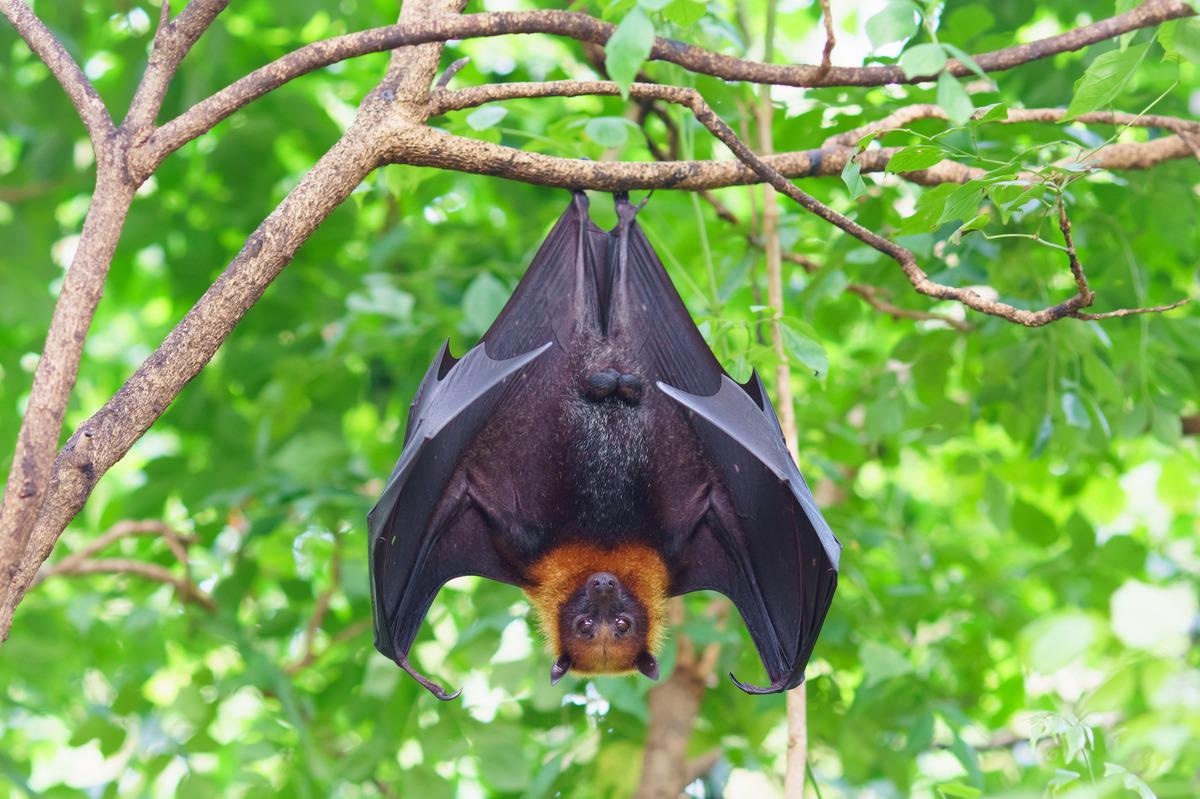Alphacoronaviruses found to be common in bats in the upper Midwestern United States
Coronaviruses (CoVs) are enveloped, positive-sense RNA viruses, belonging to the Nidovirales order's Coronaviridae family. CoVs are members of the Riboviria family of viruses, which use RNA-dependent RNA-polymerases (RdRps) to reverse-transcribe the viral genome, which replicates in the host cell's cytoplasm.
Alphacoronavirus, Betacoronavirus, Gammacoronavirus, and Deltacoronavirus are the four genera of the Coronavirinae subfamily. Alphacoronaviruses (alphaCoVs) and betacoronaviruses (betaCoVs) infect humans, cows, swine, rats, cats, dogs, and bats, while deltacoronaviruses and gammacoronaviruses mostly infect avian species.
 Study: Alphacoronaviruses Are Common in Bats in the Upper Midwestern United States. Image Credit: jekjob/Shutterstock
Study: Alphacoronaviruses Are Common in Bats in the Upper Midwestern United States. Image Credit: jekjob/Shutterstock
Several human CoVs are related to bat CoVs, and spillover from closely related bat CoVs is suspected in some human CoVs, such as severe acute respiratory syndrome coronavirus (SARS-CoV). severe acute respiratory syndrome coronavirus 2 (SARS-CoV-2)- is suspected to have originated in bats as well, though additional research is needed to confirm this. Bats are also reservoirs for a variety of alphaCoVs and betaCoVs, according to earlier studies.
A trio of researchers from Dakota State University used a pan-coronavirus PCR to screen bats submitted for rabies testing owing to human exposure in order to find potentially novel bat CoVs that may represent a concern to people.
Six full and partial genomes were constructed, all of which were quite similar to the Rocky Mountain bat coronavirus 65 partial genome. Evolutionary links between bat, cattle, and companion animal CoVs were discovered by phylogenetic analysis.
The study
By nested PCR, 12 homogenates from 174 bat specimens were positive for CoV. The majority of both samples and CoV-positive samples were from Minnehaha County, South Dakota's (SD) most populous county. Positive samples came from both urban and rural sampling sources in roughly equal numbers. The Eastern half of SD has more samples tested than the Western half.
For all 12 bat CoV positives, Sanger sequencing was conducted on the nested PCR result. BLASTN was used to compare the Sanger sequences of the 12 positive bat CoV RdRp sections and was discovered that they were 96.0–98.2% comparable to partial alphacoronavirus sequences reported in Eptesicus fuscus. The inclusion of Eptesicus bat coronavirus (EbCoV) as a probable but unapproved species in the genus Alphacoronavirus was based on previously determined incomplete E. fuscus CoV sequences. The six complete and six RdRp sequences revealed here most likely correspond to the proposed species EbCoV, based on their great resemblance to EbCoV.
The nucleotide identities of the six EbCoV genomes were 98–99% identical. Genes encoding the replicase polyproteins open reading frame (ORF)1ab, Spike (S) glycoprotein, envelope (E) protein, membrane (M) protein, and nucleocapsid (N) protein were discovered using open reading frame and BLASTP analysis. Between S and E, a putative accessory gene ORF3 was discovered. ORF7, a possible accessory gene, was discovered downstream of the N gene. All of the EbCoV proteins were strikingly similar to the alphacoronavirus HCQD-2020 (HCQD-2020), which was recently discovered in South Korea. For all proteins, there was greater than 97% identity between EbCoV and HCQD-2020, with the exception of S, which had just 83.6% identity. S, ORF3, and E genes overlapped ORF1ab, S, and ORF3 by four, four, and 29 nucleotides, respectively.
Apart from HCQD-2020, BLASTP analysis of EbCoV was performed using strain 14300 as a sample sequence to determine the closest homologs. With roughly 60% identity, the ORF1ab protein was most similar to bat alpha-CoVs found in Asia and Europe, as well as the pig severe acute diarrhea syndrome coronavirus (SADS-CoV) and porcine epidemic diarrhea virus (PEDV). The S protein was most similar to NL63-related and 229E-related bat CoVs and PEDV (47% identity).
ORF3 shared about 40% of its sequence with homologs discovered in bat alpha-CoVs. The envelope (E) protein of bat and human alpha-CoVs was 50% identical. The membrane (M) protein was 65% identical to alpha-CoVs from bats and pigs. The nucleocapsid (N) protein shared 79% commonality with N from an alpha-CoV E. fuscus Appalachian Ridge P1C837 partial sequence and less than 50% similarity to other bat alpha-CoVs. Apart from 97.1% identity to HCQD-2020, BLASTN and BLASTP detected no significant similarities between nucleotide and amino acid sequences of the ORF7 gene.
The ORF1ab gene was phylogenetically analyzed using near-complete genome sequences and incomplete RdRp sequences discovered. With significant bootstrap support, all strains formed a monophyletic group that contained RMCoV65. These findings indicate that all 12 CoV-positive strains found in this study are conspecific. The bat CoV strains HKU2 and SADS-CoV2 were shown to share a sister clade with the EbCoV clade.
Implications
In comparison to other parts of the world, the Americas have had relatively minimal surveillance for bat CoVs. Out of the vast majority of New World CoVs, 89%, are alpha-CoVs, which include all CoVs found in Eptesicus.
The authors used pan-CoV primers to identify 12 CoV-positive E. fuscus, all of which were EbCoV, implying that there is limited CoV variation in E. fuscus in the upper Midwest.
Because this study used samples from a small geographic area, more surveillance is needed to establish the breadth of CoV diversity in American bats.
- Reagan Schaeffer, Gun Temeeyasen and Ben M. Hause. (2022). Alphacoronaviruses Are Common in Bats in the Upper Midwestern United States. MDPI. doi: https://doi.org/10.3390/v14020184 https://www.mdpi.com/1999-4915/14/2/184
Posted in: Medical Science News | Medical Research News | Disease/Infection News
Tags: Amino Acid, Cell, Coronavirus, Coronavirus Disease COVID-19, Cytoplasm, Diarrhea, Gene, Genes, Genome, Glycoprotein, Membrane, Nucleotide, Nucleotides, Protein, Rabies, Research, Respiratory, RNA, Sanger sequencing, SARS, SARS-CoV-2, Severe Acute Respiratory, Severe Acute Respiratory Syndrome, Syndrome, Virus
.jpg)
Written by
Colin Lightfoot
Colin graduated from the University of Chester with a B.Sc. in Biomedical Science in 2020. Since completing his undergraduate degree, he worked for NHS England as an Associate Practitioner, responsible for testing inpatients for COVID-19 on admission.
Source: Read Full Article
